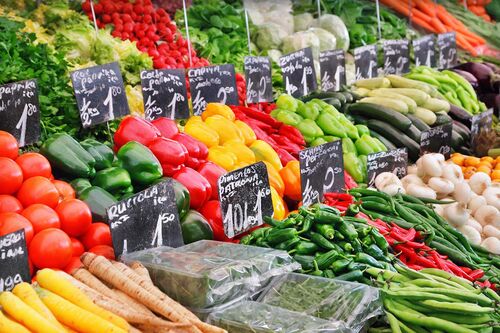Eating a healthy balanced diet has positive effects on physical and mental health, can help us stay fit and energetic. We teach children in schools the importance of eating a varied diet and maintaining nutritional balance, and we see campaigns to get fit and eat healthy, but the sad reality is that a healthy diet is not always easy to maintain. It is unfortunate, but too often an unhealthy diet it is both cheaper and more convenient.
According to the What is the cost of a healthy food basket in Ireland in 2020? report (linked here) released by Safefood in September 2021, a healthy diet can cost between 13%-35% of a low income household’s net income, often making it unaffordable. The figure changes depending on a number of factors including: composition of household, age of children, and location.
The minimum food basket for a two-parent household with a primary and second level age child are the most expensive. This is due to children aged 12 and over requiring more food, with food costs for a teenager being almost double that of a pre-school child.
Food costs in rural areas tend to be higher than for urban areas. With the minimum food basket costing an additional 12–14.6% for households with children, 6.2% for single adults of working age, and 2.7–3.5% more for pensioners. This is due to distance from larger supermarkets with more offers and affordable options. People in rural areas tend to drive long distances to large supermarkets once a week to do a large shop to get the bulk of their shopping, while relying on local smaller shops for items with short sell-by-dates such as bread and milk, shops that tend to have fewer offers and less affordable options.
The lower a household’s income the higher the percentage of that income will be taken up by buying food. Households on unemployment and other social welfare supports spend a higher percentage of their income on food than other groups.
Unfortunately due to rising prices, cost of utilities, and rent across the country, many lower income households no longer have 35% of their income to spend on food. A problem exacerbated by inadequate welfare payments and a minimum wage which is 80% of the living wage of €12.90.
Meat, breads and cereals, dairy products, fruit, and vegetables account for the largest share of the healthy food basket. For a household struggling with bills it can be a lot easier to buy frozen food.
The unfortunate reality is that eating healthily is not affordable for many lower income households, and this situation is likely to get worse as prices, rents, and the cost of utilities rise. Setting the minimum wage to the living wage and raising unemployment and other social welfare supports to ensure that people can meet a minimum essential standard of living is urgently required to ensure households can afford to eat a healthy diet.
